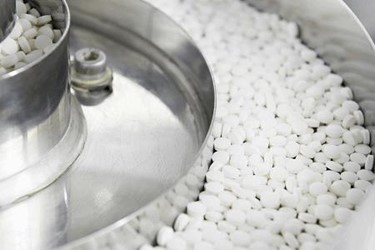- Home
- Blog
- News
- Basics
- Sources
- Agencies, Regulatory & Organisations
- CERSI Excipients Browser
- Excipient Report
- Excipient DMF List
- EXCiPACT Certified Companies
- Excipient Documentation
- Excipient EINECS Numbers
- Excipient E-Numbers
- FDA Inactive Ingredient List
- FDA GRAS Substances (SCOGS) Database
- IPEC Americas
- USP - U.S. Pharmacopeia
- Definitions
- Whitepapers / Publications
- Supplier
- Services
- Media
- Events
- 1st pharmaexcipients Poster Award
- Event Calendar
- Events featured by pharma-excipients
- 4th Annual Formulation & Drug Delivery Congress
- DDF Summit
- ExcipientFest Americas
- ExcipientFest Asia
- Global CompliancePanel
- International Conference and Exhibition on Pharmaceutics & Novel Drug Delivery Systems
- Formulation & Drug Delivery USA Congress
- Laboratory Medicine 2018
- Making Pharmaceuticals Europe
- Making Pharmaceuticals Exhibition
- Pharma Integrates
- PharmaExcipients China @CPhI China
- TTC Technology Training Center
- Jobs
- Online Sourcing
- Contact
30. August 2018
LIVE WEBCAST Tuesday, October 2, 2018 at 11am EDT, 10am CDT, 4pm BST, 5pm CEST Can't make the live webcast? Register now and view it on-demand after the air date. Event Overview The Inactive Ingredient Database (IID) provides information on inactive ingredients present in FDA-approved drug products and is used by industry as an aid in developing drug products. How can sponsors gain a better understanding of the FDA requirements and avoid lengthy review cycles, unnecessary requests for...
19. August 2018
The staff of the FDA’s Center for Drug Evaluation and Research (CDER) always tries to utilize cutting-edge science and up-to-date process management, befitting our stature as the global “gold standard” in drug regulation. Maintaining that standard requires us to keep up with evolving technology and the latest scientific, medical and regulatory advances. Current factors impacting drug development include the genomic revolution, the rise of targeted therapy, the availability of digital...
12. August 2018
The FDA recently revamped the methods it uses to determine which foreign and domestic drug manufacturing sites warrant inspection or other types of surveillance and at what frequency. In concert withthe method revamp, the agency introduced a multiyear resource planning process that will enable it to better use resources and plan frequencies of product sampling as well as inspections. Great article by Jerry Chapman At the FDA/Xavier PharmaLink conference at Xavier University in Cincinnati, Ohio,...
12. February 2018
Excipients are crucial ingredients in final drug formulations with potential impacts on product quality, stability, tolerance, release profiles, local distribution and availability, and thus overall efficacy and safety. Recent regulations have increased the requirements for drug manufacturers and excipient suppliers with respect to ensuring the quality and safety of excipients.
08. February 2018
In the highly regulated pharmaceutical industry, manufacturers can’t help but wonder what regulatory authorities like the FDA think of emerging technologies. So what do the global authorities have to say about continuous manufacturing?
29. January 2018
The head of the U.S. Food and Drug Administration on Thursday said it is preparing a new, more restrictive policy targeting what drugs compounding pharmacies can produce that do not go through the agency's approval process.
14. January 2018
Data integrity continued to be a hot topic in the pharmaceutical industry through 2017. According to a recent analysis by GMP (good manufacturing practices) intelligence expert, Barbara Unger, approximately 65 percent of all US Food and Drug Administration (USFDA) warning letters issued in FY2017 (October 1, 2016 until September 30, 2017) included a data integrity component.
04. January 2018
The year gone by saw the highest number of generic drug approvals by the US Food and Drug Administration (FDA), along with the most ever novel drugs (46); the most ever novel devices, and the first ever gene therapies. In 2017, 46 new molecular entities (NMEs) were approved by the FDA , and that excludes the pathbreaking CAR-T and gene therapies.
13. December 2017
Polyethylene glycol (PEG) is a chemically inert, amphiphilic polymer used as an excipient in many pharmaceuticals for decades, and as a conjugate with biologicals (ie, PEGylation) since 1990. To date, the US FDA has approved 14 PEGylated therapies with diverse indications.
03. November 2017
The estimated timeline for a drug product from discovery to market is 10 to 15 years. However, less than 12 percent of drug candidates that enter clinical trials will ultimately receive FDA approval. The Orphan Drugs Act of 1983 ensured that there were adequate incentives offered to drug developers working on therapies to treat fewer than 200,000 patients in U.S.










